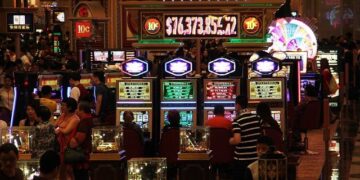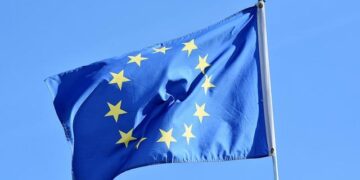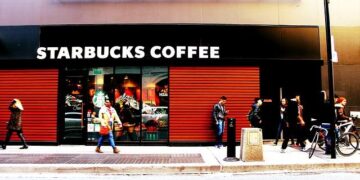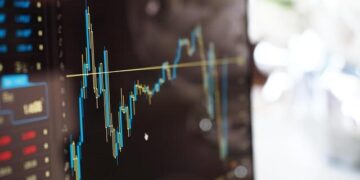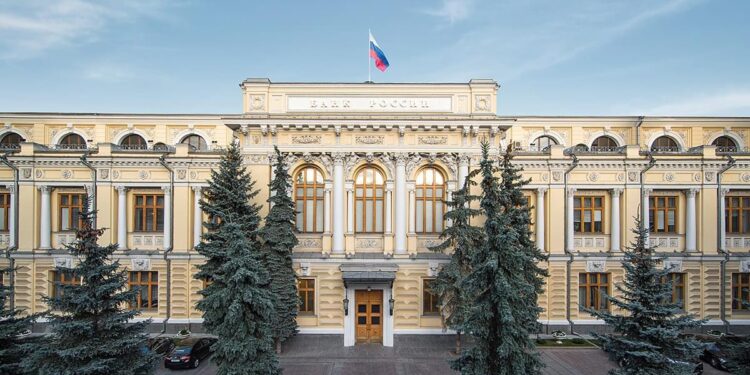The Russian Central Bank has lowered its key interest rate to 16.5%, responding to signs of a slowing economy amid ongoing domestic and international challenges. This decision marks a notable shift in monetary policy as authorities aim to stimulate growth while balancing inflationary pressures. The move, announced on [date], reflects the central bank’s careful effort to navigate a complex economic landscape shaped by sanctions, fluctuating oil prices, and subdued consumer demand.
Russian Central Bank Lowers Key Rate in Response to Slowing Economic Growth
The Central Bank of Russia has decided to cut its key interest rate by 1.5 percentage points, bringing it down to 16.5%. This move marks a significant pivot in monetary policy aimed at cushioning the slowing economy and stimulating growth. Recent economic indicators have pointed to decreased consumer spending and weaker industrial output, prompting the bank to ease borrowing costs in hopes of revitalizing business investment and improving market confidence.
This rate cut comes amid ongoing global uncertainties and a cautious domestic outlook. Analysts highlight several factors influencing the decision:
- Inflation showing signs of stabilization but remaining above target
- Ruble volatility affecting import prices
- Geopolitical tensions impacting investor sentiment
- Government measures aimed at supporting key sectors
| Previous Rate (%) | New Rate (%) | Market Expectations (%) |
|---|---|---|
| 18.0 | 16.5 | 16.5 – 17.0 |
Implications of the Rate Cut for Inflation and Consumer Spending
In light of the recent rate cut to 16.5%, inflation expectations have begun to shift cautiously. While the reduction aims to stimulate economic activity, analysts warn that easing monetary policy too quickly could reignite inflationary pressures that have lingered amid supply chain disruptions and fluctuating commodity prices. Consumer prices may experience moderate increases as borrowing becomes more affordable, potentially reversing the slow but steady decline in inflation observed over recent months.
On the consumer side, the rate cut is expected to inject fresh momentum into spending, providing relief for households burdened by high interest rates. Lower borrowing costs typically translate into:
- Increased access to credit for durable goods
- Stronger demand in housing markets
- Enhanced consumer confidence leading to higher discretionary expenditures
However, the pace of recovery remains contingent on external factors such as international sanctions and energy prices, which continue to cast uncertainty over disposable income levels and overall economic stability.
| Indicator | Pre-Rate Cut | Projected Post-Rate Cut |
|---|---|---|
| Inflation Rate | 5.8% | 6.2% – 6.5% |
| Consumer Spending Growth | 1.4% | 2.3% – 2.7% |
| Loan Demand | Moderate | Increasing |
Policy Recommendations for Stabilizing the Russian Economy Amid Global Uncertainties
To navigate the current economic turbulence, it is crucial for policymakers to adopt a multi-faceted approach focused on restoring investor confidence and ensuring fiscal discipline. Monetary policy should remain flexible but cautious, balancing the lowered key rate with measures to prevent capital flight and inflationary pressures. In tandem, enhancing transparency and communication from the Central Bank will help stabilize market expectations. Additionally, fostering public-private partnerships can drive innovation and economic diversification, diminishing reliance on volatile commodity exports.
Structural reforms must also prioritize long-term stability through targeted interventions. The government could consider:
- Expanding support for small and medium-sized enterprises (SMEs) to boost domestic consumption
- Implementing regulatory improvements to enhance the ease of doing business
- Strengthening social safety nets to mitigate the impact of global shocks on vulnerable populations
| Policy Area | Key Recommendation | Expected Outcome |
|---|---|---|
| Monetary | Maintain flexible interest rate policy | Control inflation while supporting growth |
| Fiscal | Enhance budget transparency | Improve investor confidence |
| Structural | Promote SME access to credit | Stimulate domestic demand |
To Wrap It Up
As the Russian Central Bank lowers its key interest rate to 16.5% in response to a cooling economy, market watchers will closely monitor the impact on inflation and economic growth in the coming months. With external pressures and internal challenges continuing to shape Russia’s financial landscape, the central bank’s move signals a cautious approach aimed at stimulating activity while managing risks. Further developments will be critical in assessing the trajectory of Russia’s economic recovery.


